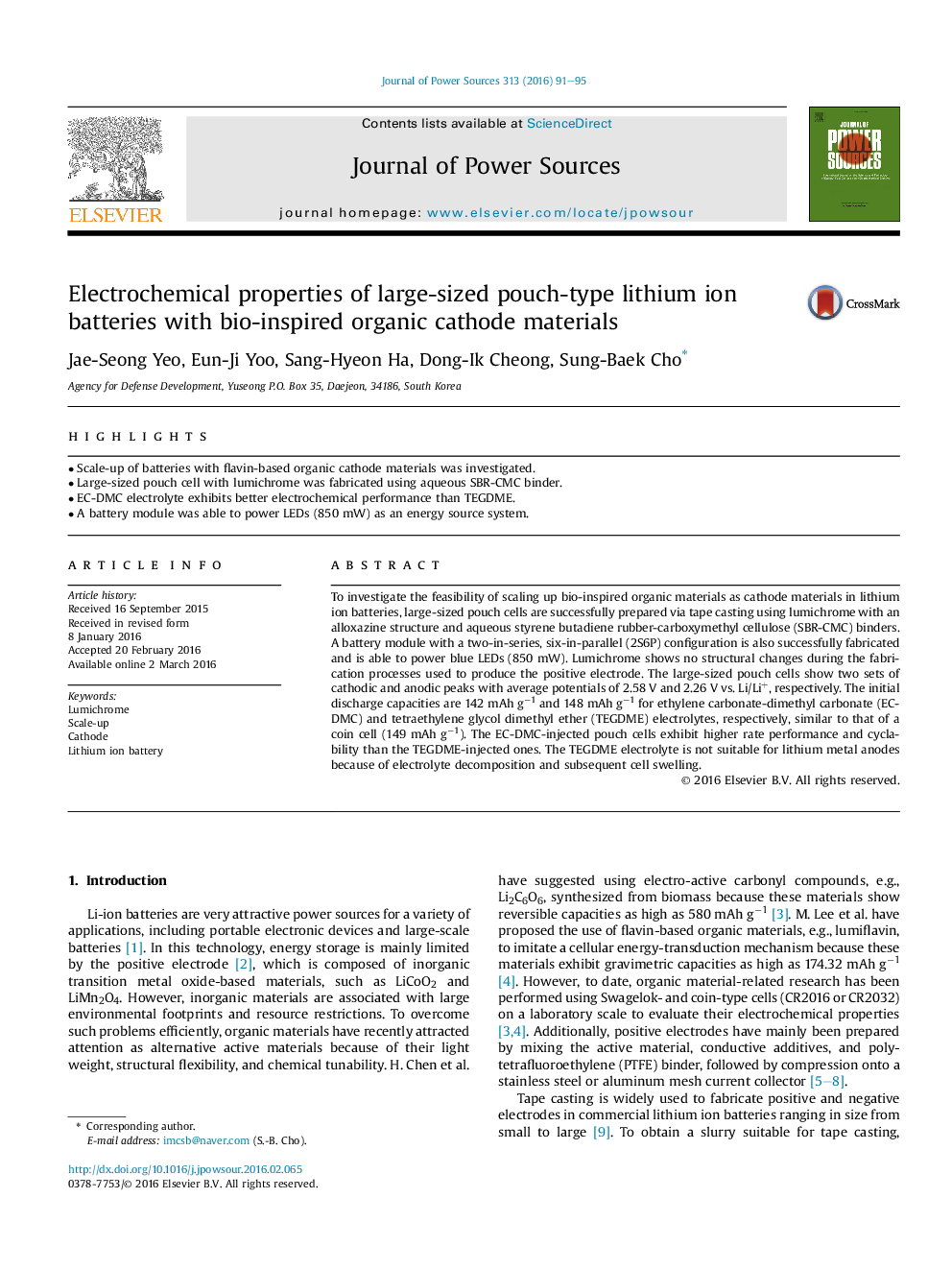| Article ID | Journal | Published Year | Pages | File Type |
|---|---|---|---|---|
| 1286246 | Journal of Power Sources | 2016 | 5 Pages |
•Scale-up of batteries with flavin-based organic cathode materials was investigated.•Large-sized pouch cell with lumichrome was fabricated using aqueous SBR-CMC binder.•EC-DMC electrolyte exhibits better electrochemical performance than TEGDME.•A battery module was able to power LEDs (850 mW) as an energy source system.
To investigate the feasibility of scaling up bio-inspired organic materials as cathode materials in lithium ion batteries, large-sized pouch cells are successfully prepared via tape casting using lumichrome with an alloxazine structure and aqueous styrene butadiene rubber-carboxymethyl cellulose (SBR-CMC) binders. A battery module with a two-in-series, six-in-parallel (2S6P) configuration is also successfully fabricated and is able to power blue LEDs (850 mW). Lumichrome shows no structural changes during the fabrication processes used to produce the positive electrode. The large-sized pouch cells show two sets of cathodic and anodic peaks with average potentials of 2.58 V and 2.26 V vs. Li/Li+, respectively. The initial discharge capacities are 142 mAh g−1 and 148 mAh g−1 for ethylene carbonate-dimethyl carbonate (EC-DMC) and tetraethylene glycol dimethyl ether (TEGDME) electrolytes, respectively, similar to that of a coin cell (149 mAh g−1). The EC-DMC-injected pouch cells exhibit higher rate performance and cyclability than the TEGDME-injected ones. The TEGDME electrolyte is not suitable for lithium metal anodes because of electrolyte decomposition and subsequent cell swelling.
